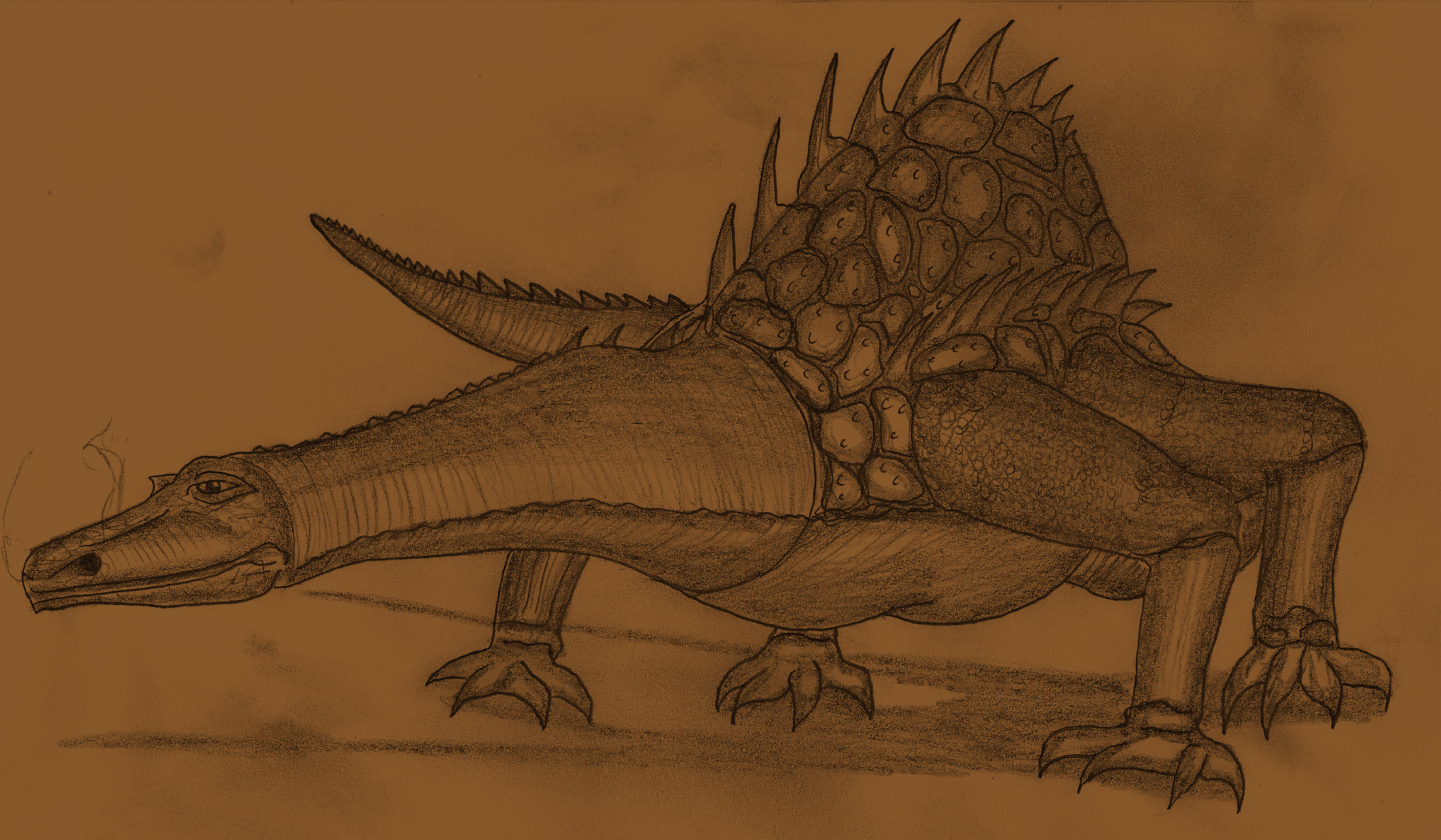HOME | DD
 Adiraiju — Fafnir - reconstructive Sketch circa. 1924
Adiraiju — Fafnir - reconstructive Sketch circa. 1924

#creature #nibelungen #dienibelungen #1924 #creaturedesign #dragon #fafnir #seigfreid
Published: 2018-03-25 11:55:10 +0000 UTC; Views: 2911; Favourites: 48; Downloads: 4
Redirect to original
Description
February 14, 1924
As I read in the Times today, an amazing discovery has been made in the field of paleontology. An enormous skeleton has been found outside the town of Androp in the Wiemar Republic, lying half-exposed near a dried riverbed. The skeleton superficially resembles that of a dinosaur, but differs in a number of ways; the brute was initially thought to be an elaborate hoax. When alive, it possessed a high, ridged spine, a long neck, and an overall appearance reminiscent of a medium-sized sauropod dinosaur. However, the head of the animal more closely resembles that of a crocodilian, with a long, flat snout and vicious-looking pointed teeth.
More remarkable still is the fact that the remains are believed to date back no farther than the 5th century AD, meaning that the beast was alive alongside humankind. That it encountered man at some point is almost certain, due to the scars on the eye socket and between the third and fourth ribs revealing that a sword was what killed the beast.
In hopes that I might be placed in a position to gain access to such a marvelous specimen, I have taken a greater interest in the paleontology department. My imminent doctorate has granted me access to a number of remarkable biological anomalies already, but such a wondrous discovery as this has only fired my ambitions to a burning need. None have dared make the suggestion aloud, but the word has been whispered in every scientific circle, every graduate student's dorm, every newspaper editing room.
This is a dragon.
Update: April 12, 1944
As news of the war flows out of the radio, I have learned that the Munich Museum of Natural History has been bombed to pieces. The great skeleton of the dragon has been broken and shattered under tons of rubble, along with the most complete known specimen of Spinosaurus aegypticus. The discovery that set me on the path to where I am today has been lost forever.
In the years since the discovery, a number of suggestions have been made as to the identity of the organism. High levels of sulfur in the Earth nearby suggest that the dragon - it's no secret anymore, though it took over a decade to be officially recognized as such - may have indeed had some connection to fire or volcanic activity. Some in the area have even suggested - due to a handful of ancient sketches in an archaeological site nearby - that this might be the dragon named "Fafnir" who was slain by the hero Seigfried, son of King Seigmund of Xanten. If nothing else, the injuries on the dragon are consistent with how Fafnir was said to have been slain (Seigfried jabbed the dragon's left eye out with his sword before putting the blade through the brute's heart). According to various legends, Fafnir was a giant who slew his brother Fasolt for a magic treasure and then used the magic to transform himself into a dragon to guard his ill-gotten gains. Whether these legends have any basis in history may never be known.
Related content
Comments: 10

👍: 0 ⏩: 1

👍: 0 ⏩: 1

👍: 0 ⏩: 0

WOW that looks like Kingsaurus from ultraman
👍: 0 ⏩: 1

Correction Kingsaurus looks like him, as his movie was made in 1924 were as Return of Ultraman came out as recently as 1971.
👍: 0 ⏩: 1

but the animal never looked like that according to modern science. am I right?
👍: 0 ⏩: 0

👍: 0 ⏩: 0




























